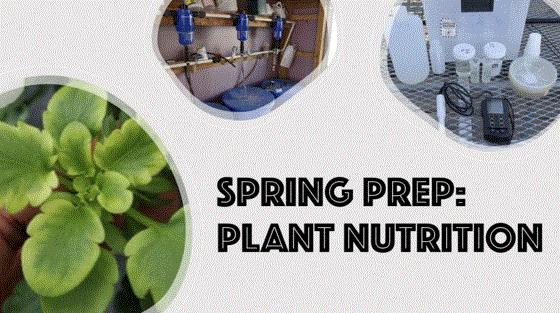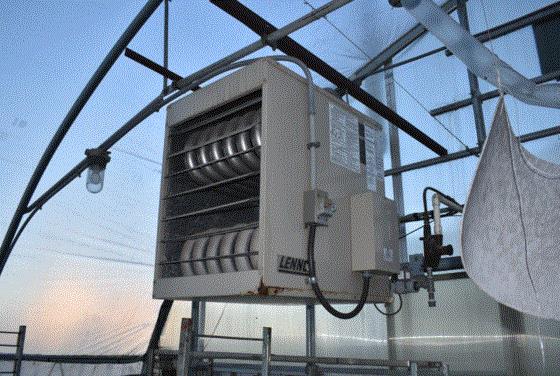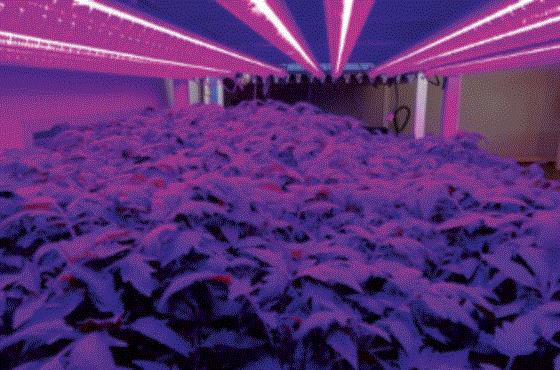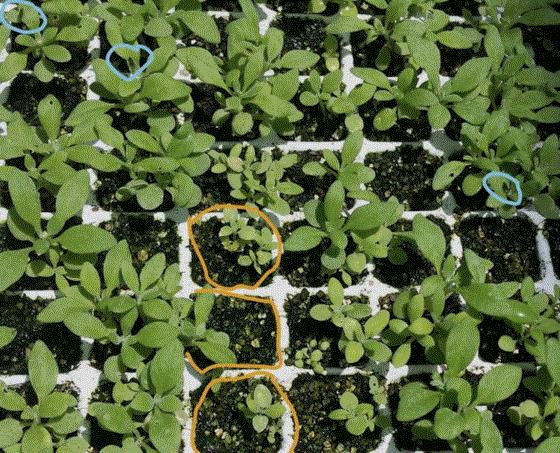NEW VIDEO! Spring Prep: Nutrition
This is about as timely as it gets … In the latest Tech On Demand video, I’m joined by Dr. Josh Henry, our newest team member, who recently joined Ball as a technical service specialist with expertise in plant nutrition and fertility. Josh has a hort degree from The Ohio State University and an MS and Ph.D. in Horticultural Science from North Carolina State, as well as plenty of experience in the field post-college working with growers of all types.

In this video and podcast, he takes you through a range of topics related to crop nutrition with the goal of setting you and your team up for success with spring production.
For this discussion, Josh covers an early-season checklist that includes water testing, injector calibration and the importance of having an in-house testing toolbox handy. Then he digs deeper into options for fertilizer—macronutrients and micronutrients—and tips for adjusting pH up or down. There’s a lot of great information packed into 25 minutes, so this is a perfect video and podcast to share with your entire production team.
WATCH THE VIDEO PRESENTATION ON YOUTUBE.
LISTEN TO THE AUDIO VERSION VIA THE TECH ON DEMAND PODCAST, BROUGHT TO YOU BY GROWERTALKS. It can be found on Spotify (click the link), APPLE PODCASTS and just about any other podcast app you use. Be sure to subscribe to Tech On Demand, brought to you by GrowerTalks so you never miss an episode.
Here are some additional resources Josh mentioned that will add to the trove of info he shared:

Nick’s Tip of the Week: Getting Ready for Spring—The Importance of Temperature
Each week, I’ll work with my buddy Nick Flax, a technical services expert at Ball, to share a concern that’s come up during one of his numerous calls with growers across North America. This week it’s the final part in his series of spring prep tips working through the five factors of plant growth. The topic on his mind is temperature.
PROBLEM: The last of the five factors of plant growth I’ll cover in this year’s Get Ready for Spring series is temperature. There are way more situations where greenhouse temperatures need to be considered than I can fit into one newsletter tech tip. So, I’ll mirror the format used in last week’s discussion on light to touch on critical temperature-related factors and issues—especially for winter/early spring production.

NICK’S TIP: The first thing to understand is that plants perceive and respond to temperature as dosage or “temperature over time.” Think of this similarly to how plants respond to the accumulation of photosynthetically active radiation (PAR; about 400–700 nm wavelength light):
-
PAR energy accumulation = new node (leaf or bud) and root formation
-
Temperature “accumulation” = how quickly new leaves, buds and roots develop.
Another critical point to understand is that every crop has an optimal temperature range for development. On the other side of the same coin, all crops have high and low temperature tolerance thresholds. Keep these points in mind as you decide where to place or move crops, when the weather conditions change or an extreme event like a polar vortex hits your area in winter or early spring.
-
The further above or below a crop’s optimal temperature range your greenhouse gets, the slower the crop will develop.
-
Once you reach a crop’s high or low temperature tolerance threshold, damage will occur. The severity of recoverable injury or irreversible damage depends on how high or low the temperature was and the duration of the temperature spike or crash, respectively.
-
It’s almost impossible to maintain every crop’s optimal temperature range in a shared production space. As such, you must compromise and place crops strategically to achieve a “happy medium” that allows everything to develop at a predictable and steady rate.
Propagation Pointers for Winter/Early Spring
The success of plug and liner propagation hinges on your ability to maintain appropriate greenhouse temperatures! Especially in winter and early spring, if your soil or air temperatures are too cold, your young plants will struggle. Keep the following in mind if you have young plants on your benches between December and the end of February:
-
Bottom heat is very helpful in propagation. Seed germination, the rate of root initial formation, and root development on unrooted cuttings (URCs) are strongly dependent on appropriate soil temperatures. If you can provide heat and precisely regulate temperature in the root zone, you will be much better equipped to grow plugs and liners quickly and uniformly.
-
Never use cold water straight from your source in propagation. Whenever possible, use tempered water around 65–70F (18–21C) to water plugs and liners or when overhead mist is needed. Use of cold water will rapidly lower the soil temperature and slow (or completely stop) seed germination or root development. Depending on how cold your water is, it can take hours or most of an entire day for the growing media to warm up again—especially if you don’t have bottom heat.
-
If you propagate many of your own young plants, invest in appropriate heating infrastructure. Install more than you need to maintain appropriate temperatures in your propagation area under average wintertime temperatures. This will allow you to keep your greenhouse warm even in the most extreme conditions for your geographic area if such winter weather comes through.
-
The ability to maintain appropriate temperatures in propagation has a major downstream impact on young plant growth and post-transplant performance. If you’re unable to maintain appropriate soil and air temperatures in a worst-case scenario (like a polar vortex), you’ll likely be better off purchasing most of your young plants instead.
Finished Production Pointers for Winter/Early Spring
Toned transplants and established finished crops are more resilient to below- or above-optimal temperatures than young plants in propagation. However, the ability to maintain appropriate air and rootzone temperatures in finished crops is critical. Try to think of greenhouse temperatures at a slightly higher level for finished crops in the following ways:
-
Temperature affects how quickly plants transpire (release water vapor from their stomata, the gas exchange sites on leaves). Transpiration is the strongest driver of water uptake by roots (transpirational pull). The lower your greenhouse temperature, the less plants will transpire and the slower they will take up water. Whenever your greenhouse is colder than ideal for a given crop, adjust watering practices to avoid waterlogging the soil. Irrigate just enough to keep plants from wilting but do not saturate the media.
-
If your greenhouse is cold and growing media remains wet with no effective way to dry down quickly, rootzone disease pressure will likely increase. Cool + wet = perfect conditions for pathogens like Pythium. If you know an upcoming weather change will force your crops to remain cold and wet, ensure that an appropriate rootzone protectant has been applied recently. A cold and wet rootzone with a fungicide protectant is a much lower-risk situation than cold and wet rootzone without one.
There are lots of ways you can prepare your greenhouse for extremely cold weather events in winter and early springtime. Check out this awesome e-GRO Alert for tips and tricks to help protect your crops if impending weather will make it hard to keep your crops warm.

Photoperiod Control Info from UMass
As you know, creating optimum environments is one key to growing high-quality crops. So much research has been done on light levels over the years and crop response has been dialed in so carefully that some crops seem “plug and play” when it comes to light control. But having an understanding of the processes and basic science behind it all is critical for good decision-making and the ability to adjust quickly when necessary.
One of the Tech On Demand team members passed this University of Massachusetts Extension fact sheet on to me this week as a fantastic breakdown on PHOTOPERIOD CONTROL SYSTEMS FOR GREENHOUSE CROPS. I agree: it’s comprehensive and technical, but still understandable. This could be a useful training document for your growers.

The fact sheet begins with definitions of terms like photoperiod and daylight but then moves into the importance of daylight duration and specifically civil twilight. This was a new term to me and is defined as “the interval between sunrise (or sunset) and the time when the sun is 6 degrees below the horizon.” As the UMass researchers explain, we experience two periods of civil twilight in each 24-hour period: before sunrise and after sunset.
The sheet goes on to clarify: Let's suppose that the sun rises at 6 am and sets at 6 pm, and we would all agree that the duration of daylight is 12 hours. The question we need to ask is, do photoperiodically responsive plants perceive this as 12 hours of light? The answer is no. The light intensity at sunrise and sunset is often greater than 20 footcandles (ft-c).
Light at very low intensities, i.e, civil twilight, is sufficient to induce photoperiodic responses in plants. For example, light intensity of less than 2 ft-c is sufficient to inhibit normal flower bud initiation in poinsettia, a short-day (SD) species for flowering. Thus, for photoperiodic responses, photoperiods are estimated by adding the periods of civil twilight to the duration of daylight.
After some tables showing how this impacts specific crops, the authors get down to tactics and methods of photoperiod control, different potential light sources and manipulating daylength.
If photoperiod has been a challenge for your team or you just want to learn more, check out this fact sheet.

… More on Photoperiod—Video Miniseries
Speaking of the importance of understanding and controlling photoperiod, we have a four-part Tech On Demand MINISERIES covering the topic. In the series, Dr. Will Healy takes the current research related to photoperiod response of greenhouse crops and breaks it down into understandable information that will help you avoid flowering and growth issues and nail your crop timing.

Get ready for a quick trip through different flowering classifications – Day Neutral, Long Day and Short Day – with time spent on major crops that fall into each group.
For the FIRST VIDEO, Will explains some terminology and background knowledge in flowering classifications that will help you and your team make production decisions using photoperiod response.
Looking specifically at day-neutral crops in PART TWO, he details a couple of the key ones—geraniums and impatiens—as well as other common annuals and perennials.
In the THIRD VIDEO, Will focuses on facultative long-day plants, starting with petunias, before breaking down the photoperiod response of calibrachoas, pansies, violas, snapdragons and more.
Wrapping up the photoperiod miniseries with VIDEO FOUR, Will turns his attention to short-day plants—specifically garden mums, poinsettias and zinnias.

Allysum Plugs Yellowing … What’s Up?
One of our experts got this question from a grower and it’s probably a good time of year to share it, along with the answer.
Q: We’re seeing a yellowish hue on our Alyssum foliage, as well as dwarf plants. We had an initial problem with Phyllotreta cruciferae (crucifer flea beetle) as the bite marks show, but don't feel it’s related. We do spray twice a week for downy mildew. What’s happening here?

A: The yellowing demonstrates overwatering and potentially a Pythium infection. The green slime (algae) on the soil (greater in the cells with yellow plants than green plants) supports this observation of overwatering.
Check out the orange circle in the photo. You’ll also see fungus gnat or shorefly adults on the leaves (blue circle), another indication of too-wet growing conditions.
The key is to make sure that once the germination is completed (cotyledons unfolded) where a level 3 to 4 moisture is critical, that you go to a level 2 to 4 to make sure the soil dries between irrigations. Remember, level 4 is when a drip comes out of the bottom of the cell, while level 2 is dry on top with mid-brown (not tan) on the bottom. For an even more “scientific” approach to watering, a lot of plug operations use a tray weight method, where they identified the weight in grams for each moisture level. You might want to start determining your specific tray weights. We found out that this helps many growers identify correct moisture levels, as the 1-5 scale can be subjective.

Finish Line … Welcome Dr. Sean Campbell!
We publish 10 e-newsletters here at Ball Publishing—each one focused and dedicated to a specific industry segment or topic. In the past few years, our coverage of the controlled environment agriculture (CEA) market has increased to the point that Inside Grower (our “brand” for that segment) is now a standalone print magazine, complete with digital content like videos, webinars and yes, an e-newsletter. Inside Grower managing editor Jennifer Polanz had been writing the newsletter for the past eight years. But just this week she passed the baton to a new editor, Dr. Sean Campbell.
Jen’s not going anywhere—actually, this gives her more time to focus on Inside Grower magazine and Green Profit, her other duty, but I wanted to share her introduction of Sean. I sometimes include content from our other e-newsletters in Tech On Demand, so it’s always nice to put a face to a name.

Here's what Jen had to say:
Dr. Sean Campbell, a research scientist with a Ph.D. from the University of Florida who's worked in the vertical farm space and has experience in sensory evaluation, developing new products and in controlled environment agriculture.
In the newsletter, he shared a little about himself:
Thank you very much, Jen. I can't express how excited I am to be the newest member of the Ball Publishing team! As a former (aka forever) Gator and UC-Davis Aggie, it is incredible to see the breadth of talent contributing to the field of controlled environment agriculture, and I can't wait to learn alongside you readers as I help cover the latest CEA advancements, setbacks and everything in between.
On a personal note, I'm always happy to hear from each and every one of you with thoughts and comments. Bonus points if you include your favorite suggestions for camping, hiking, national parks or anything else outdoors related!
Welcome to the newsletter squad, Sean! And, if any of you run into him out and about, be sure to say hello and share any CEA ideas (or hiking destinations) you might have.




Please feel free to send your comments, constructive criticism and topic ideas to me at bcalkins@ballhort.com.

Bill Calkins
Editor - Tech On Demand
This email was received by you and 25,981 other fine subscribers!
If you're interested in advertising in Tech On Demand, contact Kim Brown ASAP and she'll hook you up.